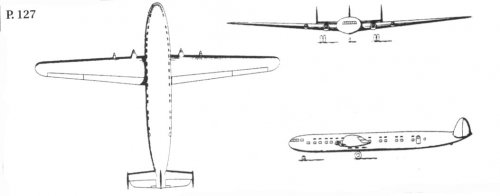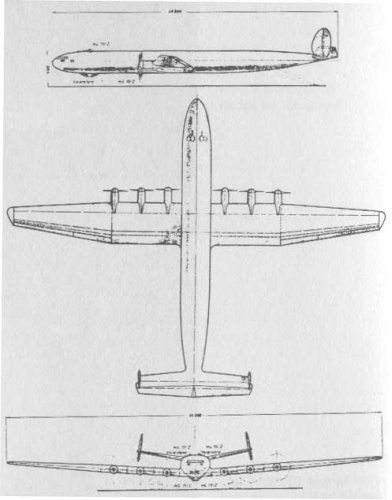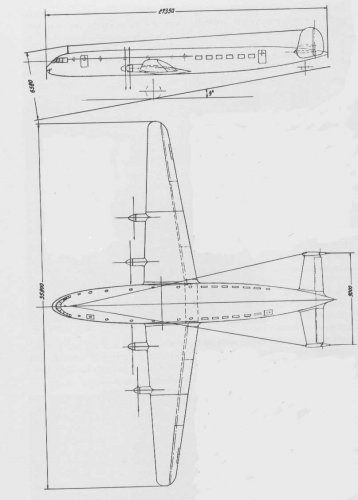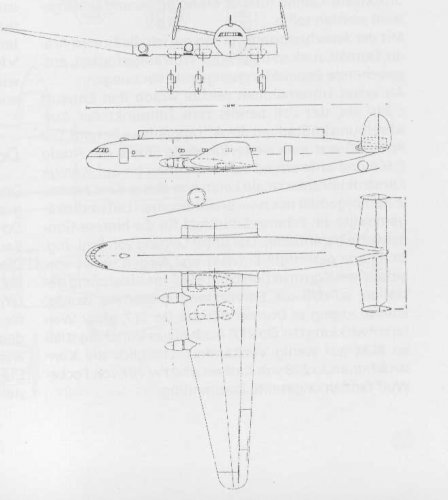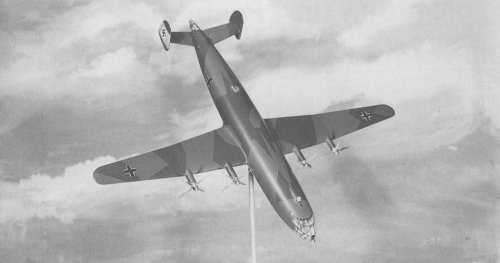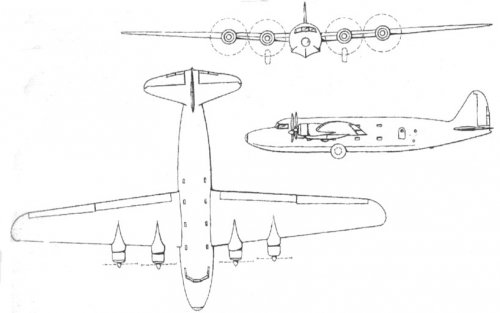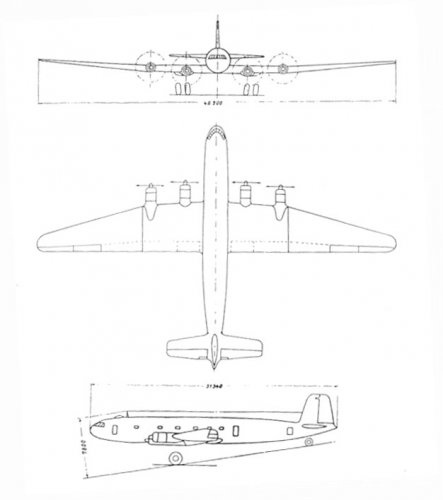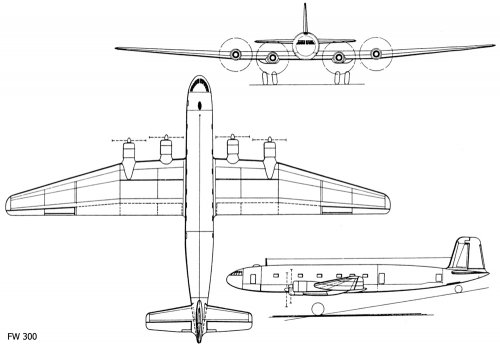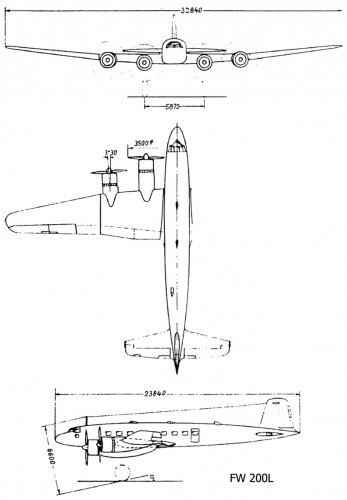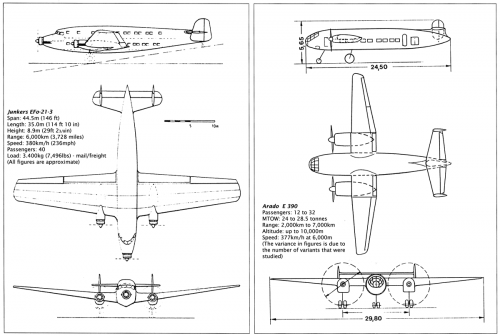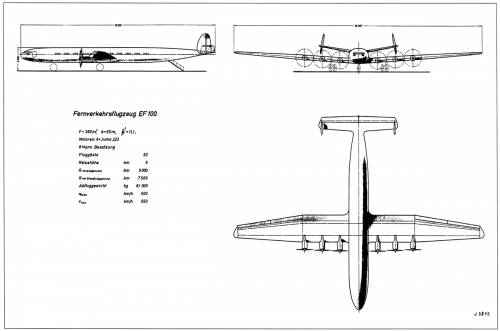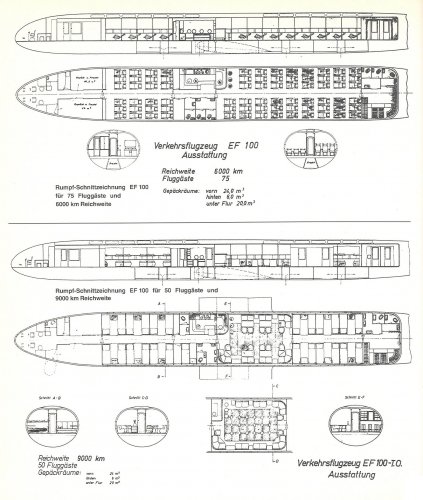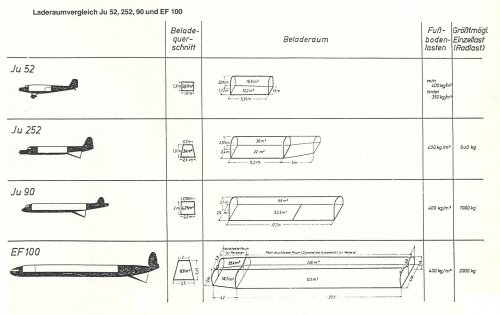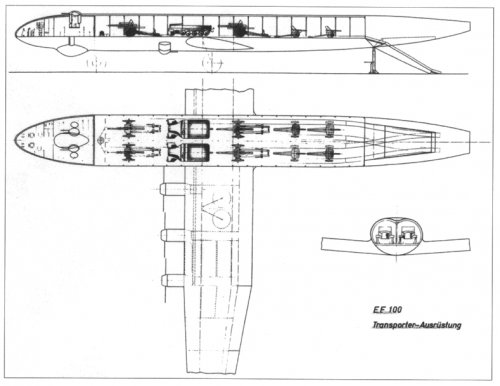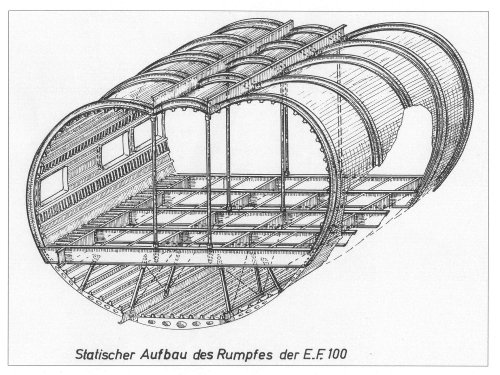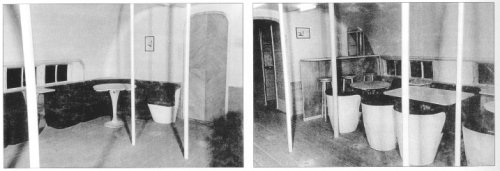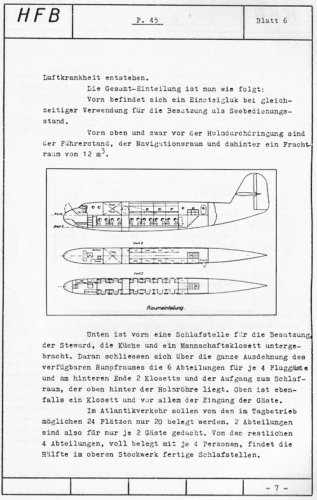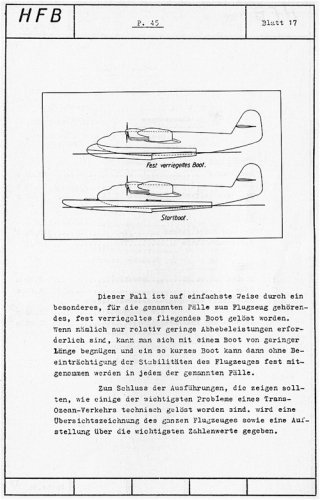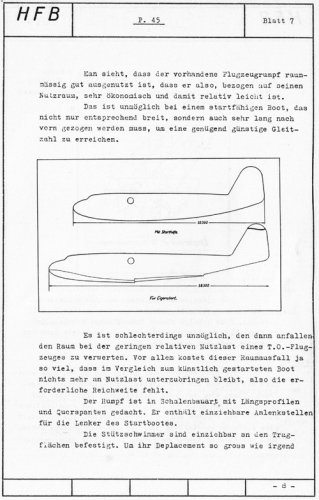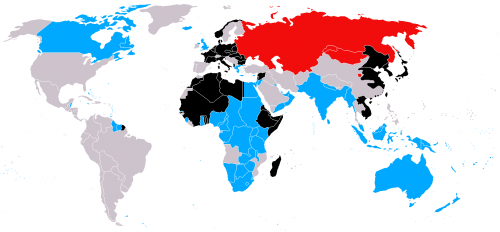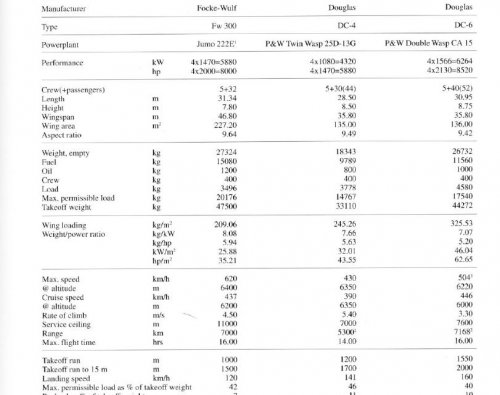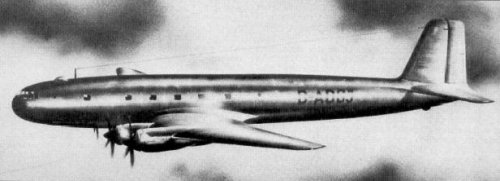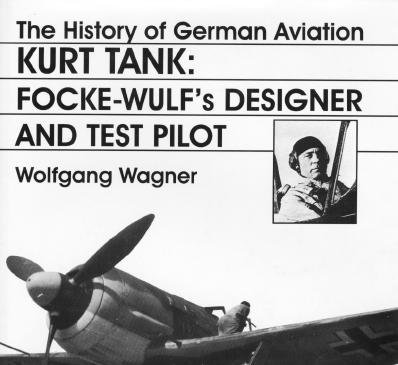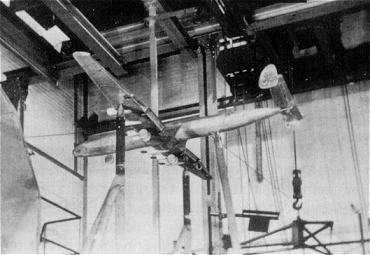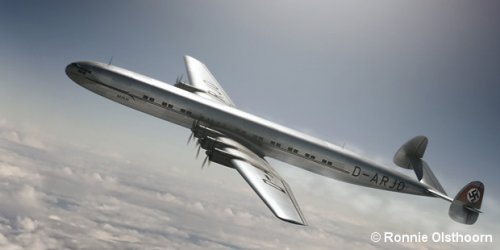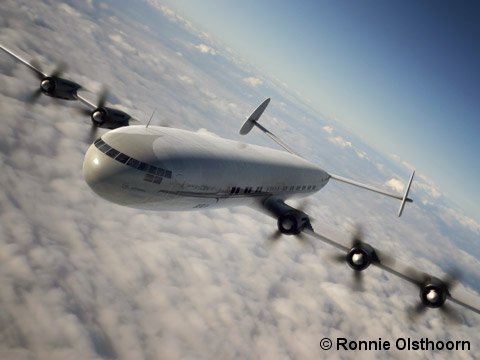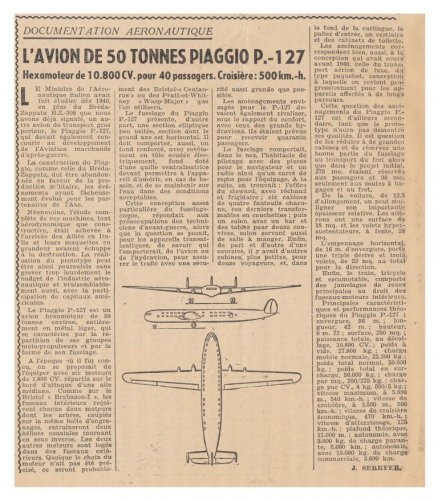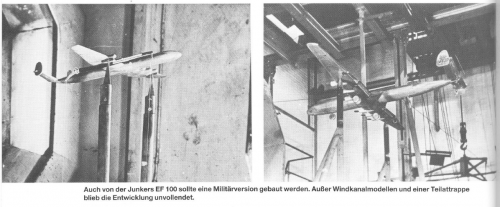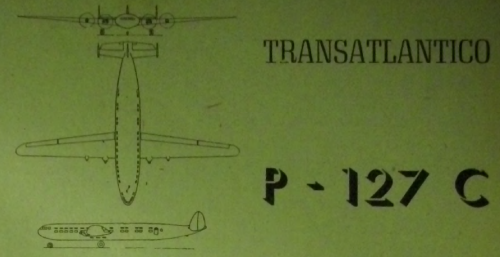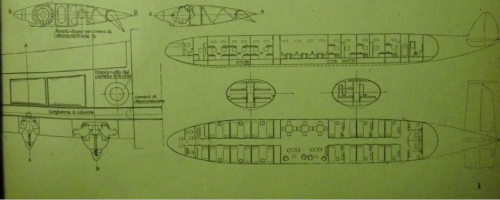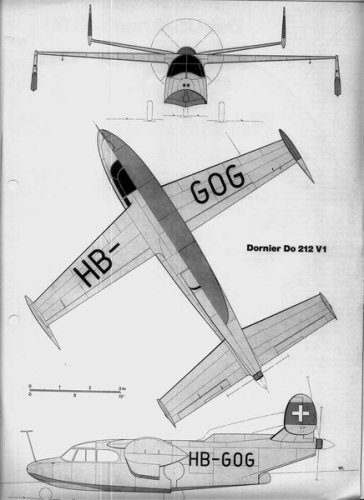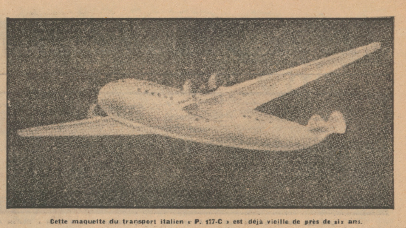- Joined
- 14 June 2006
- Messages
- 2,300
- Reaction score
- 561
Ok, in 1940 the war as just started or was about to start (for Italy and Japan) and things were going fairly well. In Germany and Italy airlines and governments started to plan for the expected post-war increase in air traffic, expecially on the Atlantic routes (sound familiar?).
Diffrently from the 1938-39 spate of competions (primarily Lufthansa, on which another topic soon), requests were for land-based planes... This tells probably something.
First project is the less known (in my view). In mid-1940 Italian LATI (later Aliitalia) asked for a trans-atlantic liner with pressurized cabin for 40 passengers or so. Piaggio (chief designer Casiraghi) responded with the P-127 and with the more conservative P-126 (derivative of the P-108).
P-127 had six in-line engines, four paired in the inboard nacelles. It was a wide-body (elliptical, that is) much reminiscent of the contemporary EF-100.
In 1941 Ministery of the Air gave its approval to the P-127 and work commenced on detailed desing and mock-up construction. In September 1943 detailed design had been finished and a mock-up of a section of the cabin (for seat-placement studies) was almost completed. Everithing seems disappeared in the ensuing chaos, but, don't despair yet...
Diffrently from the 1938-39 spate of competions (primarily Lufthansa, on which another topic soon), requests were for land-based planes... This tells probably something.
First project is the less known (in my view). In mid-1940 Italian LATI (later Aliitalia) asked for a trans-atlantic liner with pressurized cabin for 40 passengers or so. Piaggio (chief designer Casiraghi) responded with the P-127 and with the more conservative P-126 (derivative of the P-108).
P-127 had six in-line engines, four paired in the inboard nacelles. It was a wide-body (elliptical, that is) much reminiscent of the contemporary EF-100.
In 1941 Ministery of the Air gave its approval to the P-127 and work commenced on detailed desing and mock-up construction. In September 1943 detailed design had been finished and a mock-up of a section of the cabin (for seat-placement studies) was almost completed. Everithing seems disappeared in the ensuing chaos, but, don't despair yet...

